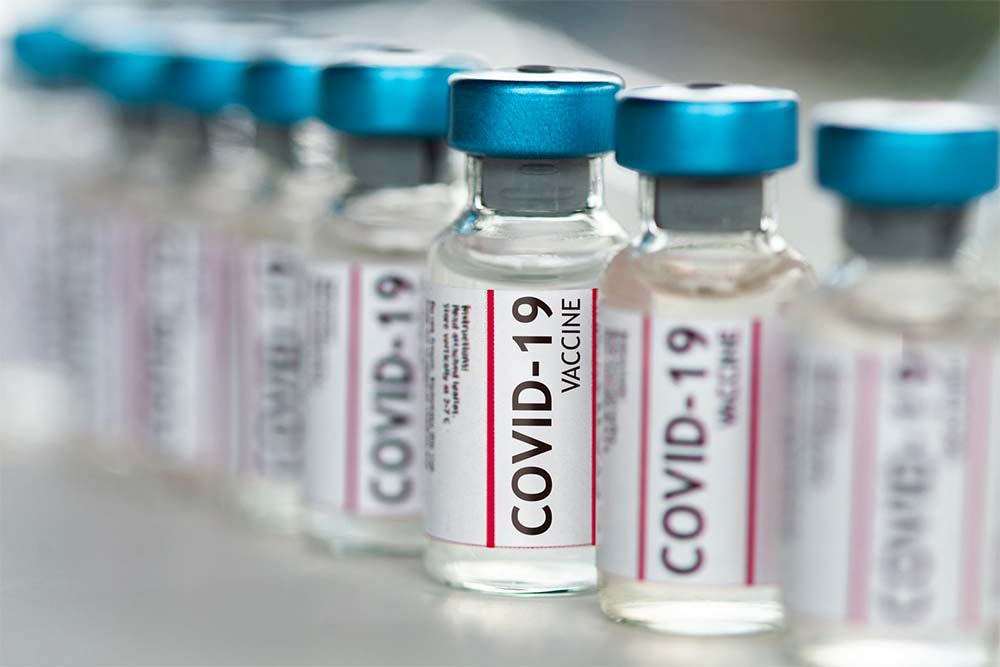
- Details
- By Jenna Kunze
American Indians and Alaska Natives are dying of Covid-19 at rates similar to those of whites who are 20 to 30 years older, according to a study published yesterday by the Brookings Institution.
The report — co-authored by Brookings fellow Sarah Reber and UCLA professor and Chair of American Indian Studies, Randall Akee (Native Hawaiian) — analyzed mortality data provided by the Centers for Disease Control and Prevention (CDC) from six states with high populations of Indigenous people: New Mexico, Montana, Arizona, North Dakota, South Dakota and Oklahoma. They compared that data against death rates for whites and adjusted for age to show disparities not yet born out in statistics.
“For every 100,000 in the population, 737 AIAN people have died of COVID-19 versus 105 whites,” the study notes.
Data shows that Native Americans and Alaska Natives in all six states are dying more frequently and at younger ages compared to white victims. In New Mexico, Native people died more than ten times that of their white counterparts. Oklahoma showed the smallest disparity among the states analyzed, and still Native mortality rates were double.
Reber told Native News Online that the CDC’s “crude mortality rate” that combines deaths regardless of age doesn’t portray the magnitude of the situation facing Indigenous communities.
“It's not really an apples to apples comparison when you have populations with very different age distributions,” she said. “But one group is much younger, so then you're kind of hiding what really is an important disparity.”
National Congress of American Indians (NCAI) Vice President Aaron Payment (Sault Ste. Marie Tribe of Chippewa Indians) said the study touches on the critical point of Native inequity.
“The data that is available shows a stark picture of a critical health disparity for American Indian and Alaska Natives versus all other populations of Americans,” Payment said. “A death rate of over two times for our Indigenous people is unacceptable and inexcusable given we are the only population of Americans with a federal right to health care pursuant to common language in most treaties.”
Researchers also found that more than 40 percent of Native Covid-19 victims were under 65 years old, compared to about 11 percent of white Covid-19 victims.
In Arizona, New Mexico and Montana, Indigenous people that died from coronavirus were, on average, 20 to 30 years younger than white people in the same states.
“All COVID-19 deaths are tragic, but whereas in white communities, the vast majority of COVID-19 victims are elderly, in American Indian communities, COVID-19 is more frequently depriving people of the opportunity to grow old at all,” the study says.
To highlight the disparities, the report calculated what each state’s death toll would have looked like if white people died at the same rates as Native Americans.
In Arizona — a state hit hard by the virus — 6,318 whites have died of Covid-19. “If whites in Arizona had died at the same rate as their AIAN counterparts, over 37,000 white people would have been lost to COVID-19,” the study concluded.
While the report is comprehensive, Payment said, flawed reporting throughout Indian Country means that the picture is a lot more severe than it appears.
“The full impact on Indian Country, however, is likely much worse,” Payment said.
The Sault Tribe of Chippewa Indians, where Payment is Tribal Chairman, is the largest federally recognized tribe east of the Mississippi with two-thirds of its tribal members living off its reservations, which further complicates Covid-19 reporting.
“I cannot tell you what proportion contracted Covid-19, or how many have died,” Payment said. “This is a failure of the federal government to fulfill the treaty obligation for health.”
Payment and Reber concluded that urgent vaccine rollout without limitation to age is needed in Indian Country to address the health inequity.
In Payment’s community, only 4,000 of the tribe’s 16,500 members in his service area have been vaccinated as of Friday. “Given the wider spread of age range for our people who have contracted and died of Covid-19, we need to have a different distribution and vaccination strategy not limited to the age distribution for the general population,” he said.
More Stories Like This
Native News Weekly (August 25, 2024): D.C. BriefsUS Presidents in Their Own Words Concerning American Indians
Native News Weekly (December 14, 2025): D.C. Briefs
Wounded Knee Massacre Site Protection Bill Passes Congress
Two Murdered on Colville Indian Reservation
Help us defend tribal sovereignty.
At Native News Online, our mission is rooted in telling the stories that strengthen sovereignty and uplift Indigenous voices — not just at year’s end, but every single day.
Because of your generosity last year, we were able to keep our reporters on the ground in tribal communities, at national gatherings and in the halls of Congress — covering the issues that matter most to Indian Country: sovereignty, culture, education, health and economic opportunity.
That support sustained us through a tough year in 2025. Now, as we look to the year ahead, we need your help right now to ensure warrior journalism remains strong — reporting that defends tribal sovereignty, amplifies Native truth, and holds power accountable.
 The stakes couldn't be higher. Your support keeps Native voices heard, Native stories told and Native sovereignty defended.
The stakes couldn't be higher. Your support keeps Native voices heard, Native stories told and Native sovereignty defended.
Stand with Warrior Journalism today.
Levi Rickert (Potawatomi), Editor & Publisher

